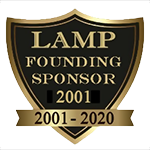eMoviePoster.com
Auction History Result 1e120 JOHN WAYNE Dixie ice cream premium '50s great c/u cowboy portrait + biography on back! Date Sold 3/31/2011Sold For: Login or Register to see sold price. An Original Vintage Dixie Ice Cream Premium Still (8x10; measures approximately 8" x 10" [20 x 25 cm]) (Learn More) John Wayne was born Marion Robert Morrison in Winterset, Iowa in 1907, but his parents soon decided they wanted Robert for their next son's name, and changed his middle name to Mitchell (one wonders if he would have been as big a star as "Marion Mitchell Morrison"!). His family moved to Glendale, California in 1911, and there he had a huge dog named Duke, and people started calling him that as well (and the nickname stuck, and he would later name his movie horse that, and eventually everyone would refer to him that way). He went to the University of Southern California (USC), and played on the football team, but he got injured and that ended football for him, and he lost his scholarship and left school. Starting in 1926, he got bit parts in many movies, including in ones for director John Ford. In 1930. after just one tiny credited role he was given the lead in The Big Trail, a major Fox western, and his name was changed at that time. But the movie was filmed in a new 70mm process, and as the Great Depression was kicking in, few theaters ordered the new equipment, so it was mostly shown in a regular version, and the movie did poorly, and that looked like the end of Wayne's career. But Wayne refused to give up, and he made ten minor appearances the next year and a half before he got the lead in a low budget serial, The Hurricane Express, and Warner Bros signed him to appear in a series of B-westerns (he had made an impression in some supporting roles in Tim McCoy movies). In 1933 he starred in a modern serial version of The Three Musketeers, and after his Warners westerns he moved to Poverty Row filmmakers, Monogram, Mascot and Republic, appearing in over 50 movies (mostly B-westerns) between 1932 and 1939. In 1939 he got his second giant break when John Ford gambled his major production Stagecoach on Wayne (but only after Gary Cooper turned down the part) and the movie was a big hit, and Wayne was finally a major star. He would go on to make over 20 films with director John Ford, including some of his very best, She Wore a Yellow Ribbon (1949), The Quiet Man (1952), The Searchers (1956), and The Man Who Shot Liberty Valance (1962). In 1959 he made one of his very best non-John Ford movies, Rio Bravo, for Howard Hawks. In 1969, he was sentimentally awarded the Best Actor Oscar for True Grit, and this was perhaps the greatest "robbery" in the history of the Oscars, for he won over Dustin Hoffman and Jon Voight, who were both nominated for Midnight Cowboy! He passed away in 1979 at the age of 72. John Wayne is a true American icon, and along with Marilyn Monroe, among the absolute most recognizable actors there is, even in the present day, decades after his passing. He made 170 movie appearances, and while many are very forgettable, some of them rank with the finest movies ever made, and if you have never seen his movies, I urge you to seek out those listed above, especially The Man Who Shot Liberty Valance and Rio Bravo, because both quickly show you just how much "larger than life" John Wayne really was! Some of his other movies include: The Sands Of Iwo Jima (nominated for the Best Actor Academy Award for this film), Big Jake, and The Comancheros. And now you can see headshots of John Wayne in our gallery, Through The Years: John Wayne (from 1930 to 1979)! Important Added Info: Note that this is a special color 8" x 10" item that was given away as a premium from the Dixie Cup company. The Dixie Cup company created a large number of such premiums, which were given away to kids who sent in Dixie Cup lids. Each premium would have a full-color image of the star on the front, and on the back was biographical information of that star, along with black & white scenes from some of their movies. Every Dixie Cup premium would have two punch holes in one border, and kids would be sent two "covers" (one front and one back) to create a "scrapbook" (the covers gave the instructions on how to make the scrapbook by binding the Dixie Cup premiums between the two covers "with color cord, shoe string, or ribbon". Note that these were first made in the mid-1930s, and they continued all the way to the early 1950s (when the two holes switched to the top of the premium). Condition: very good to fine. Learn More about condition grades 

Postal Mailing Address:
Bruce Hershenson, P.O. Box 874, West Plains, MO 65775. (For our UPS or FedEx address, click here) phone: +1 417 256-9616 fax: +1 417 257-6948 E-mail: Contact Us Hours of Operation: Monday - Friday 8:30 AM - 12:00 PM & 1:00 PM - 5:00 PM (CST) |
|||||||||||||






